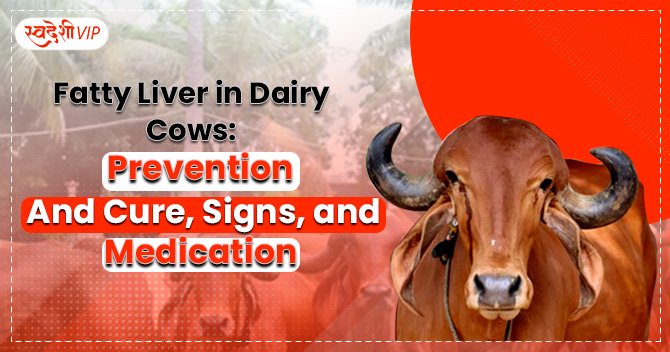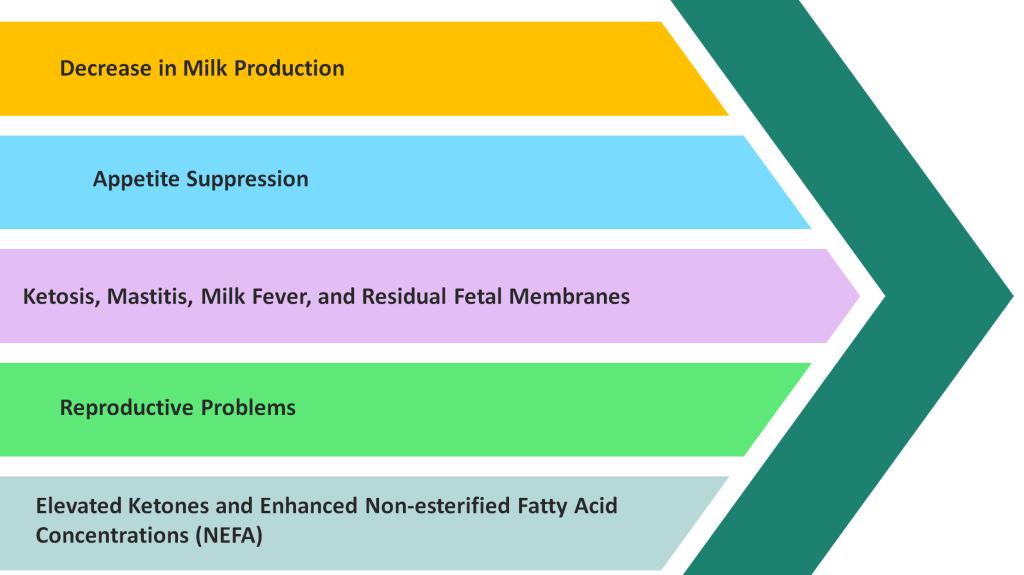
Fatty liver in dairy cows is a disease that affects the cows after pregnancy (or postpartum). It has been known to cause the culling of over 25% of cows globally. It is a typical variant of non-alcoholic fatty liver in dairy cows disease (NAFLD), that has caused severe effects on the dairy industry production throughout the world post-calving. To get to the solution, prevention, and enhance our study about this topic, we must understand it from the core. Relevant information is fairly crucial to tackle the disease and decrease its impact. And, overall make the dairy industry function smoothly and sustainably.
Fatty liver in dairy cows syndrome, a common kind of metabolic illness induced by food imbalance after birthing, is common in herds of dairy cattle on industrial farms around the globe. In the initial nursing phase, high-yielding dairy cows that produce a generous amount of milk, particularly those with an everyday milk supply of 30 kg or over, are much more likely to develop fatty liver in dairy cows disease.
Fatty Liver in Dairy Cows is common nowadays. In circumstances of bad energy balance, hormone signals induce the mobilization of body fat stores, which leads to the discharge of nonesterified fatty acids (NEFAs) from fatty tissue. Because the liver maintains 15%–20% of the NEFAs flowing in the system, it collects more in time while blood NEFA levels are higher. The biggest growth comes during lactation when plasma levels are frequently >1,000 Eq/L. If the cow is not fed, ratios can reach more elevated heights. The liver could either oxidize or esterify the NEFAs it absorbs. Triglyceride is the major esterification result that can be discharged as a component of quite a low-density lipoprotein (VLDL) or retained in liver cells. Because of reduced VLDL synthesis, ruminants go through at a far slower rate than most animals. As a result, triglycerides build in the presence of enhanced hepatic NEFA absorption and esterification. NEFA oxidation results in the synthesis of ATP via the tricarboxylic acid cycle or the creation of ketones by peroxisomal or oxidation. If blood glucose levels are insufficient, ketone production is promoted. Since insulin inhibits fat transfer from fat cells, situations that generate lower blood glucose & insulin levels result in fatty liver in dairy cows.
High intracellular triglyceride build-up in liver tissues causes liver problems and dysfunction. In 24 hours of an animal being off fed, fatty liver in dairy cows can occur. Despite the fact that fat excess in the liver is recoverable, the slow pace of triglyceride export as lipoprotein allows the condition to last for a long time. When the cow establishes a favourable energy balance, the liver lipid level starts to deplete and can take many weeks to totally cease. Overeating or neutral energy stability does not cause fatty liver in dairy cows. Excessive energy intake for upkeep and production functions will not culminate in triglyceride build-up in hepatic tissue. Unless the animal becomes overwhelmed and therefore limits the content of the diet, will triglycerides be deposited.
Randomly choosing dairy cows from commercial farms over the past years revealed that 48.85 percent of dairy cows (n = 346) were detected with moderate or acute fatty liver in dairy cows syndrome within two weeks of postpartum. Within two weeks of lactation, 40 percent to 60 percent of high-yielding dairy cows (day milking production > 35 kg) develop mild to serious fatty liver disease[1]. Furthermore, on a cattle ranch, the two weeks following parturition might make up a significant portion to 50% of illness, which is consistent with the findings. The high rate of slaughtering of dairy cows during their initial postpartum phase and it’s creating a serious worry in the current dairy sector.
Maintaining your cattle’s health is certainly one of the most significant parts to keep your farm up to date and your clients happy. Therefore, you must comprehend what to do in case your farm identifies a fatty liver in dairy cows problem. First up, you must be able to recognize it to help the cows further.
Have a look at the signs related to this disease-

The digestion of fat and fatty liver may be avoided if cows calved at the appropriate body state. A calf’s overall health score of 2.5 to 3 would be optimal. Cows must be kept clean and dry at this point and kept at the same weight during the long drought. It is best to avoid switching diets throughout this time. Overweight cows can be given glucose injections as a precautionary approach. Stress reduction is critical for fatty liver avoidance. It is best to prevent abrupt changes in the surroundings. Modifications in diet, shelter, heat, herd mates, and other factors, for instance, might reduce feed consumption and activate catecholamine-mediated fat transformation.
Without medical intervention, fatality rates can rise significantly to 25%. There is no available cure for fatty liver other than a lengthy IV glucagon infusion. Cows with fatty liver are susceptible to a variety of metabolic and viral disorders, and their milk output suffers as a result. As a consequence, they are commonly euthanized.
The Bottom Line
It is significant that you scrutinize and understand the basics and the mechanism of fatty liver in dairy cows. Once you have read through all the vital details and information above, you’ll be able to figure out a way to avoid such unforeseen circumstances.
Read Our Article:Foot Rot in Cattle: Symptoms, Treatment, Prevention and its Impact
